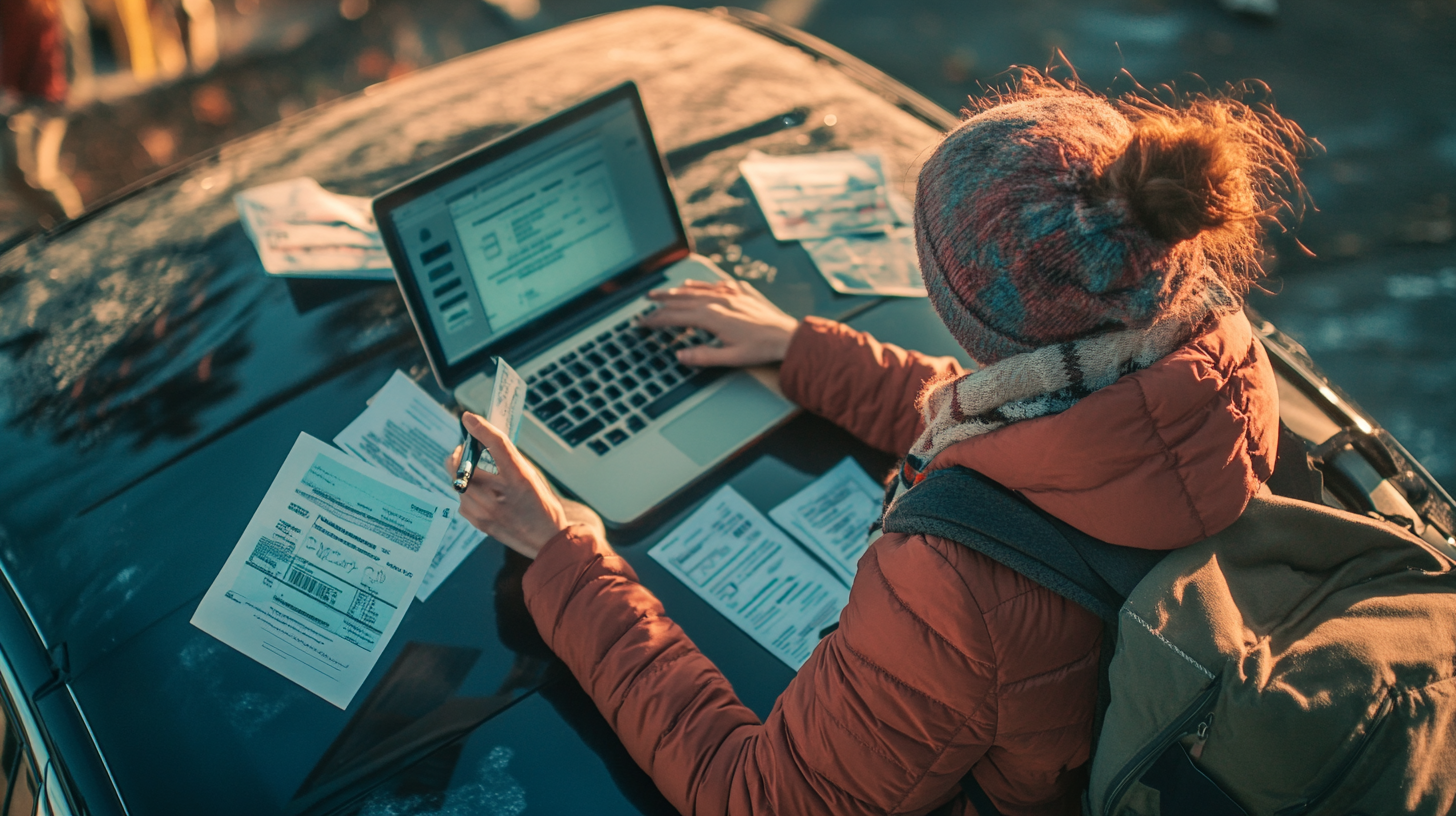A Frequent Flyer’s Guide to IRS Business Travel Deductions

Traveling for business has always been one of my favorite ways to explore the world while staying on top of professional obligations. There’s something magical about packing up my work laptop alongside my carry-on and letting new sights and sounds fuel my innovation. Understanding the intricacies of IRS business travel deductions is an art in itself, especially when we consider that tax regulations in 2025 and beyond are continuously evolving. Below, I’ll share tips, insights, and lessons learned from my own travels and research, showcasing how you can seize every tax advantage while discovering destinations in style.
Know Your Tax Home

I’ve observed that many frequent flyers struggle with the concept of “tax home.” In my travels, I’ve met self-employed adventurers who set up pop-up offices in coffee shops around the country, only to realize later that the IRS defines “tax home” as where your main work activities occur—not your personal residence. According to IRS Publication 463, your tax home is determined by the location of your principal place of business. If you decide to go nomadic and create a remote work lifestyle for months on end, it can blur those lines, requiring extra documentation to prove what counts as a legitimate away-from-home trip.
For a trip to qualify as business-related, you generally need to spend the night and perform duties tied to your revenue-generating activities. That tends to mean something beyond a one-day hop and revolves around tasks like meeting clients, hosting workshops, or attending industry events. From a practical standpoint, I always keep an updated schedule of my business appointments and store receipts in a dedicated digital folder so I can readily demonstrate my tax home and travel purpose if questioned. Accuracy is key, since even a small oversight could raise eyebrows during an audit.
Domestic vs. International Trips

When I flew to my first overseas conference, I was surprised at how much more detailed the rules became for international travel. IRS guidelines say that for domestic trips, spending over half of your days on business tasks qualifies the journey as primarily work-related. But once you cross international borders, the bar changes. If your excursion lasts more than a week, at least 75% of those days should be business-oriented to claim full deductions. A recent survey by the Global Business Travel Association indicates that nearly 40% of Americans combine some personal vacation days with their overseas business trips, so it’s crucial to calculate travel days meticulously.
Moreover, if you’re traveling with companions (like a partner or family), remember that their expenses will only be deductible if they serve a bona fide business function. I’ve seen travelers mistakenly assume they can lump everyone’s flight and lodging into the same write-off. That’s not how the IRS sees it. If a plus-one wants to join, it’s best to pay for their portion separately and keep those details out of your expense claims. Trust me—it’s far easier to separate personal from business expenses than to explain mixing them when you sit down to file your taxes.
Separate Personal Expenses

It can be tempting to combine business and pleasure when you’re heading to, say, Cancun for a conference. Perhaps you want to add a beach day or an extra tour of local ruins. I’ve done this myself, but I also learned quickly to keep flights and lodging for strictly business days separate from any personal add-ons. Additionally, the entertainment portion of a trip—like theme park tickets or local cooking classes after the conference ends—should not show up as part of your deductible claims.
One strategy I use is color-coding my calendar. Every day that’s business-focused gets marked in one color, while personal or leisure days are marked differently. This helps me tally how many days legitimately qualify for deductions. According to industry data, confusion over mixed-use travel is one of the main drivers for unsettled tax filings among self-employed. By maintaining a clear system, you’ll save yourself unnecessary stress.
Meal and Lodging Deductions

Few things are as universally appealing to frequent flyers as good meals and comfortable accommodations. However, the IRS allows only up to 50% of meal costs to be deducted for most business trips, unless special provisions apply (some scenarios through 2025 may still allow 100% deductions). For instance, if you’re taking a client out for a work-related lunch, you can typically claim half of that expense, provided it’s reasonable in price and well-documented. I keep all my meal receipts in a simple smartphone app and note any relevant business outcome that happened during the meal, like contract negotiations or content planning.
As for lodging, standard hotel rooms or modest Airbnb rentals are usually deductible on the days you’re carrying out business tasks. A tip I’ve gleaned from fellow digital nomads is to look for extended-stay options or monthly Airbnb pricing deals if you’re expecting to be in one location for a bit. Just don’t push the envelope and claim a five-star penthouse when you only need a basic suite for a tech expo. The IRS frowns upon lavish expenses that don’t align with a bona fide business purpose—a lesson learned from the stories of countless travelers who found themselves facing audits.
A recent study suggests that over 30% of self-employed individuals miss out on valid travel deductions because their receipts are incomplete or disorganized. To avoid that pitfall, consider using a reliable system to archive digital receipts and keep everything categorized by date and purpose. It’s a method I swear by, particularly when jumping between time zones feels disorienting enough!
Mileage and Vehicle Expenses

Sometimes, flights aren’t the only way to get from Point A to Point B. If you’re driving to a conference, you’ll need to track your mileage meticulously to claim expenses. Entrepreneurial folks I’ve met at business networking events often tout the standard mileage rate as a hassle-free way to recoup costs on fuel, depreciation, and maintenance. As of 2024, it stands at 67¢ per mile, and in 2025, it increases to 70¢ per mile. Those pennies can add up if you’re on the road frequently.
Keeping a precise log is everything. I record the date, starting mileage, ending mileage, and reason for travel in a digital app. That short routine, repeated each trip, ensures no confusion when it’s time to file. Importantly, employees may also get reimbursed by their employers, but remember that you generally can’t double-dip. If your workplace is already compensating you for mileage, you can’t also claim those costs as a deduction. I’ve seen travelers try to do both, and it never ends well. Better to be transparent and consistent.
Keep Thorough Records

Recordkeeping can be the deciding factor between a smooth tax season and a chaotic one. A travel blog I follow recently shared a cautionary tale about a consultant who mixed personal and business travel receipts in the same folder without labeling them, only to realize how challenging it was to separate them come tax filing time. I’ve learned from experience to devote a small chunk of time each week during my trips to file digital copies of tickets, lodging, meal receipts, and mileage logs.
IRS Publication 463 also provides comprehensive guidelines on how to log everything properly. A best practice is to write down the business purpose for each expense, such as a meeting with a prospective client or a site inspection for a project. I’ve found that even short notes can be invaluable later. Some travelers rely on professionals like CPAs, and while I fully support getting expert help, you still need to serve as the frontline recordkeeper.
Stay Compliant and Maximize Savings

In my view, compliance is a blend of honest reporting and proactive planning. Every journey offers opportunities to explore new corners of the world while also discovering new tax benefits—so long as you follow the guidelines. Keeping expenses ordinary, necessary, and non-lavish forms the foundation of good IRS relations. And when a trip is properly planned, you can reduce your overall tax burden.
I always encourage travelers to consult with professionals, such as IRS Enrolled Agents or qualified CPAs, especially if diving into newer frontiers—like extended international remote work or multi-leg trips across different countries. Tax regulations have a way of evolving, and 2025’s specifics might be quite different from what we saw a few years ago. With thorough preparation, however, you can continue to explore the world without unwanted surprises from the taxman.
Final Thoughts

Over the years, I’ve embraced the thrill of blending business with discovery. By honing strategies like accurate recordkeeping, sensible allocation of days for business tasks, and careful selection of lodging, I’ve managed to preserve more of my income and devote it to fresh, boundary-pushing travel experiences. I wholeheartedly believe that being proactive and organized is the key to unlocking the full potential of IRS business travel deductions.
It’s also worth emphasizing how quickly business travel norms are evolving. While the core IRS rules remain, traveler behavior has shifted dramatically toward flexible work setups, bleisure trips, and global collaboration. Staying on top of new guidelines ensures that we don’t leave any tax benefits on the table, especially as airlines continue innovating and travel conditions keep shifting in this tech-driven era.
Amelia Yeaher’s Take
As someone who sees every journey as a fusion of professional advancement and personal curiosity, I’m convinced that the power of proper planning and thorough recordkeeping can’t be overstated. It’s been a game-changer for me, allowing me to confidently explore new routes and frontiers with a clear sense of fiscal responsibility.
Business travel, in my view, should never be purely transactional. It’s an opportunity to enrich your perspective, foster meaningful connections, and discover new passions—in ways that align seamlessly with smart financial practices.






